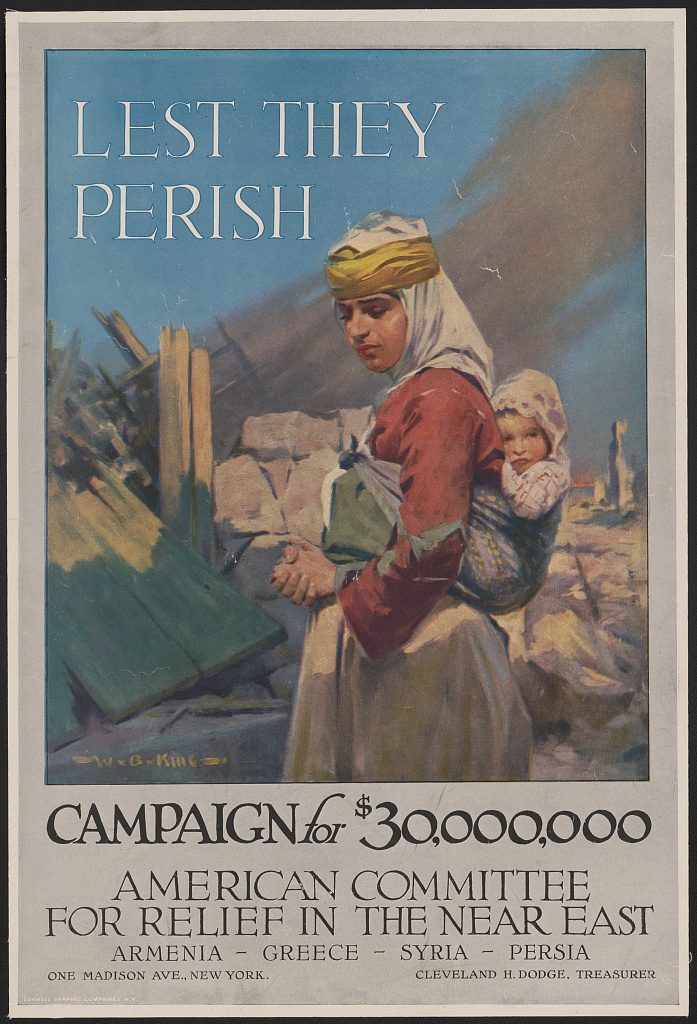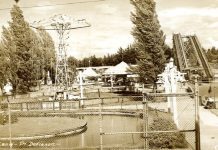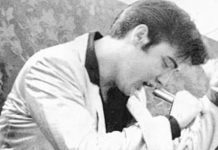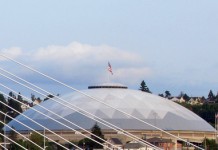The Armenian Genocide (1915-1916) was one of the worst humanitarian crises of the twentieth century. International efforts to help aid survivors and refugees were extensive. Led by the Near East Relief, now the Near East Foundation, people worldwide and here in Tacoma rallied to provide aid.
Medz Yeghern, the Armenian Genocide
Armenians are an ethnic group in Western Asia, then ruled by the Ottoman Empire. The Ottoman Empire sided with Germany during World War I. Seeing the Christian Armenians as the enemy, they were targeted for destruction. In total, over a million Armenians were killed or died of starvation and other mistreatment.

The American Committee for Syrian and Armenian Relief was founded in 1915. It was a national effort. Although it took two years for Tacoma to begin donating, the committee’s efforts were met with a generous response. A local relief committee was formed, and donations were sometimes solicited door-to-door. Groups also held their own fundraisers. A “Tag Day” sale was organized on June 6, 1917, raising over $500. In October 1917, the Odd Fellows hosted a musical and ice cream benefit, inviting Governor Ernest Lister to speak.
The Relief Committee in Tacoma enlisted many speakers, primarily missionaries and pastors. Others were Armenian. Mooshek Vorperian gave several speeches at local churches and Sunday schools. Seventeen years old, he had lost his entire family before he was able to reach the United States. (His mother and two sisters eventually arrived safely in the United States, although after his early death.) Florence Krikorian, an Armenian living in Seattle, joined Mooshek Vorperian for one speech and talked to women’s clubs.
Tacoma Holds Relief Fair
Wartime fundraising efforts peaked with the Armenian, Syrian and Jewish Relief Fair and Bazaar in 1918. Held April 8 to 13 at Stadium High School, people across the city donated items to sell and volunteered. Noted suffragist Emma Smith Devoe served as chair of the women’s division.
For a quarter (a dime for children or a dollar for the whole week), people could browse booths selling everything from baby clothes to home décor. Army and Navy booths sold sweaters for soldiers, and grade school teachers operated a fish pond game for toys. People could buy cakes (with recipes attached) or even a prize-winning cow. A car and a piano were raffled off. The Moose Lodge sponsored a frontier village called “Tacoma With the Lid Off.” Those who sought quiet could have dinner or visit the Japanese tea garden. Dances with live music lasted until midnight each night in the gym.
Hundreds of soldiers from Camp Lewis (now JBLM) visited the last day of the fair, including Major General Henry Greene, commander of the post. They were not charged admission, but dances cost a nickel. For some soldiers, the fair was quite personal. Private H. Hagopian of the 5th Company, 2nd battalion, 166th depot brigade at Camp Lewis, an Armenian, wrote a letter of thanks to the directors for helping his people.
Over $10,000 was raised at the fair. Afterward, leftover merchandise was sold at a rummage sale in the Bankers’ Trust Building.

Relief Work After World War I
The organization was renamed Near East Relief in 1919 as its work expanded to aid other groups, including Assyrians and Greeks, as further conflict gripped the region. Armenia declared independence but, after several wars, was made part of the Soviet Union in 1922.
Near East Relief continued its work in the region, and people in Tacoma continued to contribute. Donations were routinely collected at club meetings and Sunday school programs, especially around Christmastime. The Junior League sponsored items handmade by Armenian women and girls in 1924 for Near East Relief, and Lincoln High School students sponsored dozens of orphans.
Starting in 1922, the group partnered with Goodwill Industries to collect clothing to donate to refugees overseas. For the next several years, Boy Scouts, Girls Scouts, Camp Fire Girls and schoolchildren helped collect donations at local fire stations and churches on “Bundle Day.”
Do Unto Others as You Would Have Them Do Unto You
“Golden Rule Sunday” began in 1923 as a fundraising effort by the Near East Relief through churches around the world. Tacoma’s response was so generous that the head of the Near East Relief, Charles Vickery, visited Tacoma in 1926 to declare it America’s “Golden Rule City.” The head of the Tacoma committee, Thomas Swayze, was declared Golden Rule Ambassador and went on a trip to Palestine, meeting with President Coolidge on the way.
Some people in Tacoma volunteered overseas for Near East Relief. In 1922, Alfred D. Merritt became assistant superintendent of supplies at an orphanage center for 20,000 children in Alexandropol (Gyumri, Armenia). Much of Tacoma’s clothing donations went there that year.
Frances K. Headlee, a former secretary for the state insurance commission, became a director of a girls’ orphanage in Smyrna, Turkey, serving Armenian orphans and young people, many of whom had been rescued from slavery or forced marriages. Headlee wrote several letters to the Tacoma Ledger to talk about her work. Evangeline Acheson, a Jason Lee Middle School teacher, visited her brother Barclay Acheson in Constantinople in 1930 and later brought him back to speak in Tacoma about relief work.

Armenians in Tacoma
Armenia became independent again in 1991 after the dissolution of the Soviet Union. An Armenian community has grown in Tacoma, active in all parts of life and business. Armenians also have a presence throughout the state. An annual Armenian Festival is held in Seattle. Of course, the iconic Liberty Orchards’ Aplets and Cotlets (made in Cashmere, Washington) were invented by Armenian immigrants based upon the traditional dessert locum.
While Tacoma’s focused donations to the Near East tapered off during the Great Depression, the Near East Foundation (as it was renamed in 1930) continues its good work in the region, including Armenia.








































